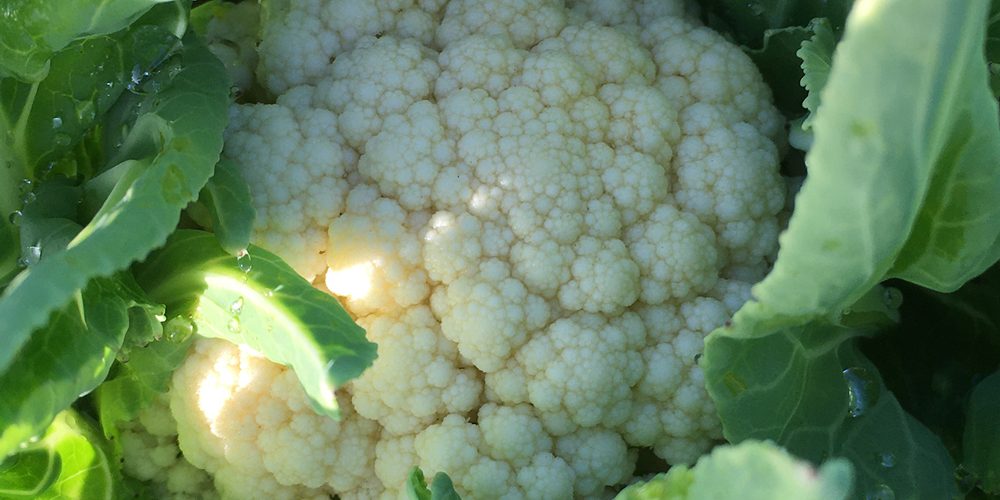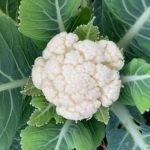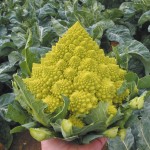- Choose a sunny site with deep, firm & moisture-retentive soil
- Add plenty of compost or organic matter before planting.
- Raised beds are perfect. If growing in pots, plant one to a large, deep pot (eg 40x40cm)
- Plant 40cm apart and firm in well by treading down the soil around the base – this will encourage the plant to produce a tight cauliflower head.
- Protect from pigeons, caterpillars and cabbage root fly by covering with horticultural fleece or mesh netting and apply a brassica collar around the base of each seedling when you plant them (you can do this by cutting a 10cm disc from cardboard, then cut into the centre. Place this around the stem at the base of the plant)
How to grow... Cauliflower
Rocket Growing Guides

Cauliflower falls into the Brassicas category of veg plants that need to be looked after in much the same way. It’s a big category, with calabrese, broccoli, cabbage and kale and there are others too. All these veggies are super nutritious and really good ones to grow in the garden. They are susceptible to several pests and diseases, so it is worth reading up a bit before you plant them so that you can be prepared!
This advice is for both cauliflower and romanesco cauliflower.
- Cauliflower Growing Guide
How to Plant Cauliflower
How to Grow Cauliflower
- During dry spells, water well once or twice a week.
- Check leaves and stems regularly for caterpillars and eggs from May to October when cabbage white butterflies are active.
- Cauliflower will start off as a slightly leggy, taller looking plant than you’d expect. As long as it is well firmed in, and kept reasonably cool in moist soil, it should start to take on a different shape after a couple of months. Once the plant is fairly mature, approx 30-40cm tall, it should start to produce the cauliflower itself.
- When the cauliflower head starts to form, pull one or two of the leaves over the top of the cauliflower itself to cover it from sun/cold weather. This will help it to maintain its creamy colour. You can use twine to tie the leaves around it if they won’t stay put!
Common Pests and Problems with Cauliflower
- Cabbage root fly – stunted growth/sudden wilting – the maggots tunnel into the roots to feed and the roots start to rot. Brassica collars and fine mesh netting will help to prevent this in future.
- Eaten by caterpillars – use netting to avoid Cabbage White butterfly from laying eggs in the first place. Check foliage (underside and near stems) regularly for small white/green/yellow eggs and wipe off. Pick off caterpillars if you find them.
- Club root – stunted growth/discoloured leaves – this is a fungal disease that can’t be remedied so you will need to get rid of affected plants. Plant future brassicas in a different area of the plot to avoid re-infection in subsequent years.
- Slugs/Snails/Pigeons – these will all eat leaves. Netting is best for keeping pigeons away from your cauliflower plants, and slug traps for slugs/snails (Beer traps work well)
- Cauliflower head not forming properly – if it’s very small, or growing loosely, or not forming at all, the problem is more than likely to do with weather conditions (too hot/dry) or soil conditions (too dry/not firmed in well)
How to Harvest and Store Cauliflower
- If you plant in spring/early summer, you should be able to harvest from late summer to autumn, when the cauliflower head reaches a good size, and before it starts to open out.
- If you plant in late summer, harvest in late autumn before the first frosts.
- Cauliflower will keep in the fridge for a few days


